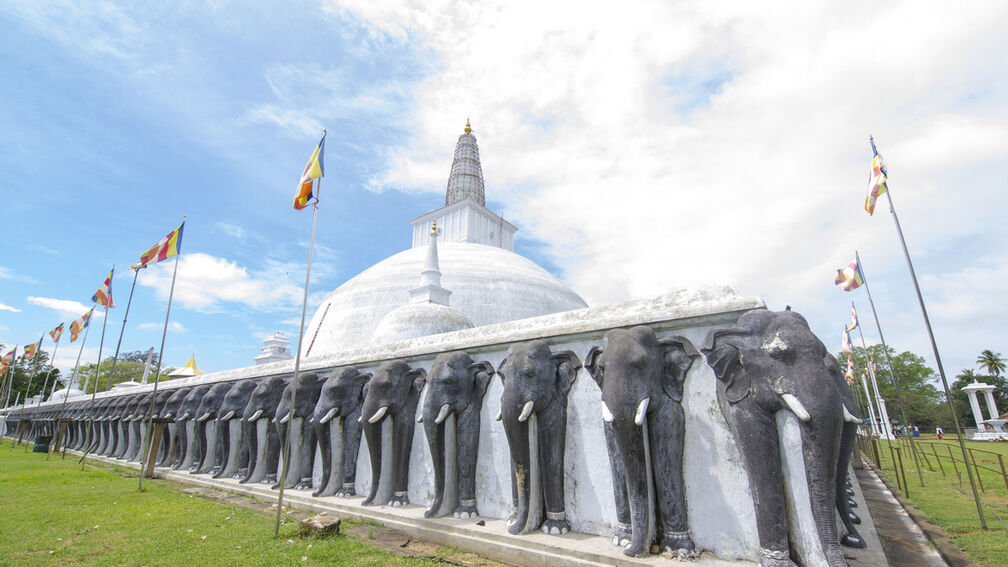Anuradhapura(m)
Overview
Quite a lot has been written about this city’s ancient history, some of which emphatically contradicts the other, one could resign to the fact that it is the general nature of retelling history and depends on when it was written, and by whom. The quote from the great Philosopher Voltaire, emphasises this retelling of history; “History is a pack of lies we play on the dead”.
Nevertheless, if you would like to get to the bottom of the island’s ancient history, it is worthwhile referring to the “Sangam Period” and the well-documented Thamil Literature of that period. The “Sangam Period”, spans from 9,600 BC – to 300 BC, and refers to the history of a region collectively known as ‘’Thamilagam,’’ consisting of today’s Tamil Nadu, Kerala, parts of Andhra Pradesh in South India, and Sri Lanka.
It is said that a Tamil Dravidian (Thiravidan) and a Hindu King by the name “Theva-Nambia Theesan” (or “Deva Nampia Tissa” as known amongst the Singhala Buddhists), embraced Buddhism at the request of very powerful Emperor Ashoka of North India.
Emperor Ashoka sent his son Mahinda and daughter Sangamitta as missionaries to convert the King into Buddhism, who also brought with them a sapling of the Bodhi Tree under which Lord Buddha attained enlightenment. The Bodhi Tree is found in Mahavihara, the Ruvanvelisaya Dagoba (a stupa – a dome-shaped Buddhist shrine) in Anuradhapura.
King Theva-Nambia Theesan’s conversion to Buddhism from being a worshiper of Lord Siva (a Sivite) gave birth to the “Thiravida/Theravada’’sect of Buddhism practiced today in Sri Lanka, Myanmar, Cambodia, Laos, and Thailand, and is one of two main Buddhist sects practiced around the world.
There are the Royal Palace Ruins in Anuradhapura to visit, as well as the Thuparamaya Dagoba, thought to be Sri Lanka’s first dagoba. This is the most ancient part of the old city and a good point to start the tour of the city.
The Sacred City of Anuradhapura is a UNESCO World Heritage Site.













